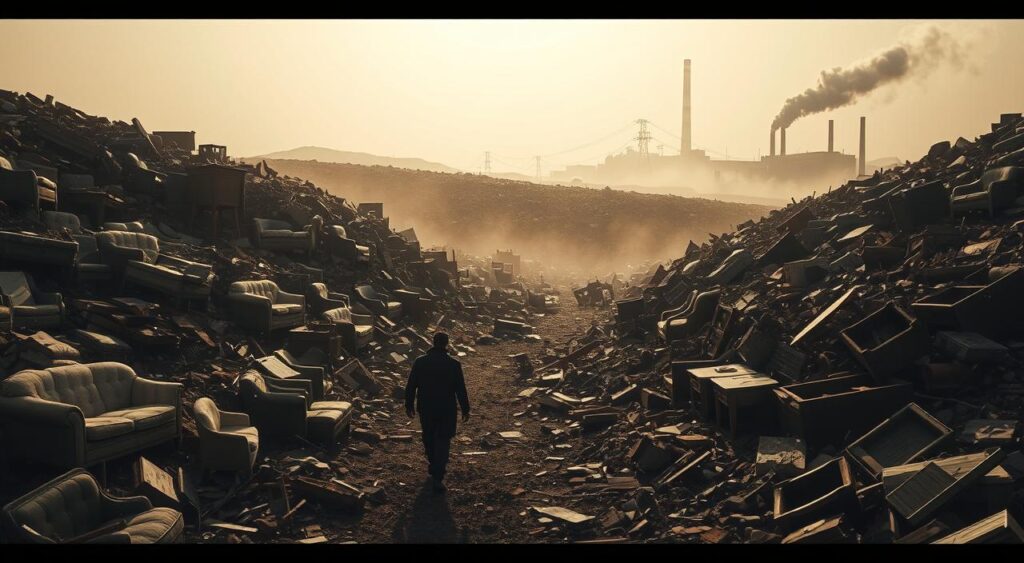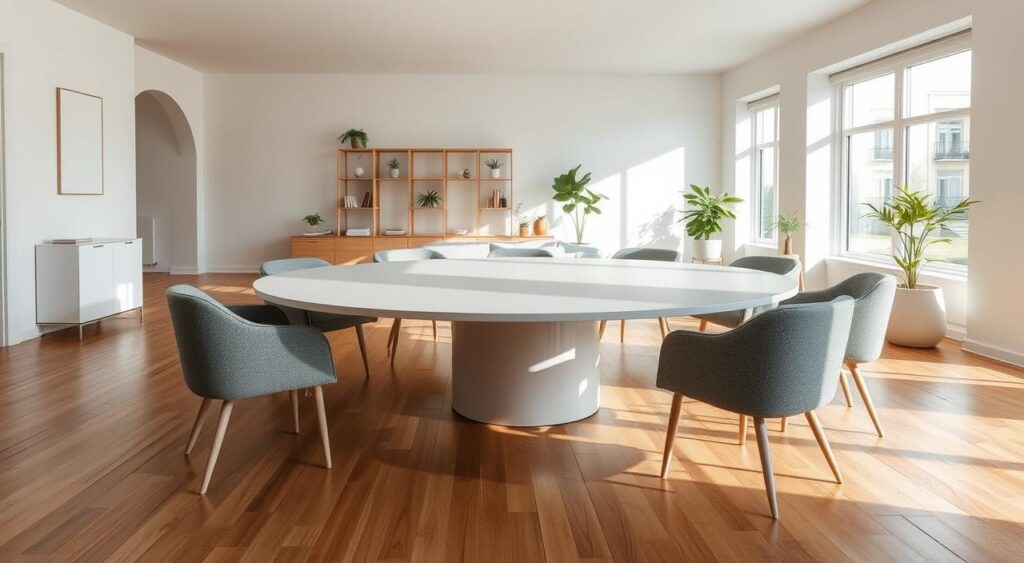The fast furniture environmental impact is now one of the biggest hidden crises in UK households. A quarter of adults replace at least one piece every year, leading to more than 22 million items discarded annually. This cycle of cheap, short-life purchases creates waste, drives carbon emissions, and puts pressure on landfills and forests.

Key Takeaways
- Over 22 million pieces of furniture are discarded annually in the UK.
- The fast furniture environmental impact includes landfill waste, CO₂, and deforestation.
- Just 17% of discarded furniture is recycled.
- Making new furniture can emit up to 1,000x more CO₂ than refurbishment.
- Choosing durable and repairable furniture reduces waste and saves money.
What Is Fast Furniture and Its Environmental Impact?
The term describes cheap, mass-produced furniture with a lifespan of only 3–7 years. Its environmental impact comes from short lifespans, poor materials, and rapid replacement rates.
From Fast Fashion to Fast Furniture Environmental Impact

This industry mirrors fashion: low cost, rapid style churn, and high disposal rates. The result is a growing environmental burden.
| Feature | Fast furniture | Durable alternatives |
|---|---|---|
| Lifespan | 3–7 years | 10+ years |
| Main appeal | Low price, trends | Repairable, quality |
| Trigger | Social media | Long-term value |
The UK’s Fast Furniture Environmental Impact in Numbers
- 22m+ items discarded annually.
- 670,000 tonnes of bulky waste, 42% of all UK bulky disposal.
- Frequent replacement rates add millions of tonnes of CO₂.
Who Creates the Biggest Fast Furniture Environmental Impact?
- 16–24s: Replace items every 2.5 years; 10% replace monthly.
- 55+: Replace every 6 years, reducing impact.
Cities With the Highest Fast Furniture Environmental Impact
- Leeds (3.49 years): High student turnover.
- Norwich (5.24 years): Strong second-hand networks keep furniture longer.
Why Good Furniture Becomes Part of the Fast Furniture Environmental Impact
Key barriers:
- No buyers (17%)
- No transport (16%)
- Hassle factor (16%)
Solutions include charity collections like the British Heart Foundation or professional house clearance removal in London.
Materials and the Fast Furniture Environmental Impact
Cheap composites, foams, and laminates:
- Hard to recycle.
- Contain flame retardants and plastics that leak toxins in landfill.
Carbon Costs: Why Fast Furniture Environmental Impact Is So High

Making new furniture produces up to 1,000x more CO₂ than refurbishing. Buying second-hand or repairing saves emissions and money.
Deforestation and Global Fast Furniture Environmental Impact
Demand for low-cost timber contributes to illegal logging and loss of old-growth forests. Certified wood and reclaimed materials reduce harm.
Corporate Responsibility and Fast Furniture Environmental Impact
Brands like IKEA are shifting to circular design, take-back schemes, and modular builds. Stronger reporting under EU directives will pressure more companies to act.
Household Choices to Reduce Fast Furniture Environmental Impact
- Buy FSC-certified or reclaimed wood.
- Choose timeless styles to avoid trend turnover.
- Repair, repaint, and upcycle.
- Donate to local charities or use London house clearance experts.
Conclusion
The fast furniture environmental impact reaches beyond landfill — it affects forests, climate, and public health. With over 22 million pieces discarded annually, small changes at home — repairing, donating, or buying durable — can cut carbon and waste. Every thoughtful choice extends a product’s life and reduces pressure on the planet.





